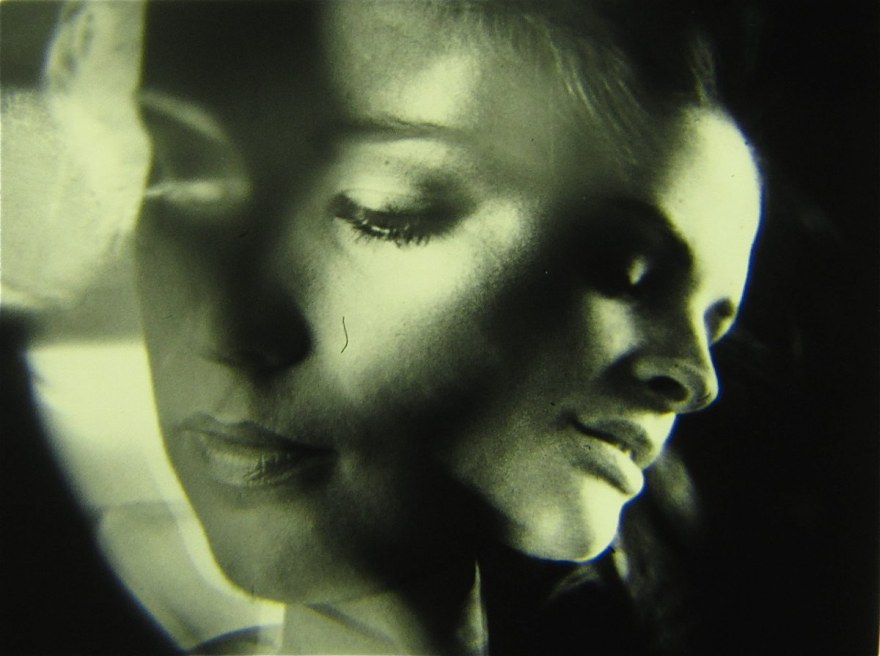Breakfast with the Exquisite Corpus
Interview with Peter Tscherkassky, director of The Exquisite Corpus
You’re known to make films with found footage. With The Exquisite Corpus, what was your method ? How did you get your footages?
I don’t search for footage. In most cases I get footage as a present from other persons. It’s a very open process because I’m not looking for a specific type of footage.
For this film, I got footages from both Holland, France and Italy.
In general, I start looking at that footage over and over and over again on a DVD tranfer.
And after a certain amount of time, you start getting ideas.
In that case, I had this wonderful footage of nudists people running around on an island and it’s more or less a classic narrative film but for bno obivious reason they are all naked.
It comes from the 1960’, and back then there was an own genre, called Nudist Films.
Do you use the released films footages or just the non edited footages?
In the opening credits you can read “The Rushes Series.” Part one of that series was the film that I did before : Coming Attractions.
Coming attractions is based on on rushes for commercials, whoch means unedited material. I got six hours of such commercial rushes, and Coming attractions was solely based on those rushes. But for The Exquisite Corpus I used both edited films and unedited rushes, three or four of them, and sometimes these rushes are just one long take in one reel, like the early films from Lumières.
My next project will be based on commercials from the national Austrian train company. You see trains moving by and the camera is panning in both directions. I have ten shots like that and it’s also not edited. Just raw footage. Boring and totally fascinating !
The title of The Exquisite Corpus refers to the surrealist technique. Did you work with other people?
No. But normally I use only one found footage source for my films. In that case, I used multiple sources, so that’s why I’m referring to the Cadavre exquis. But I made this film alone.
You’re work is not just an assemblage or re-edit of footages. You’re not only composing with the materials but you’re composing inside the substances, textures and objects.
Can you explain us how it allows you to access to innovative representations?
All my work deals with cinema, the analog era of cinema.
Here, for example, I took a scissor and cut the film into strips (pellicule), and fixed those strips onto my raw footage, exposed it, and moved the film strip frame by frame. And many other techniques… It is something organical like it can only be processed with analog cinema. You can go in between the frames and lose the notion of fixed framing. It’s constantly moving up and down.
When I work, it’s a fight against pure chaos. In order to keep the chaos out I have to be highly structured. To be in and in between, with pure chance, chaos and the structure’s evolution. Order and chaos. It’s very human. Finally, it’s a metaphor of the whole life..
Your films are often related to dreams. Why is it recurrent in your work?
Dealing with dream is a huge challenge as a dream is visual, not optical, like a camera or our perception. That’s why it’s difficult to show a dream. But thanks to my collage technique, it may allow us to get closer to a dream perspective. And you also need to quit the narrative logic, as dreams have a more open and wide interpretation of logic.
How did you build the soundtrack?
I removed all the original soundtracks from the films that I used. I gave to Dirk Schaefer the responsibility for the soundtrack. He is a genius. During the process, we were at different places but I gave him the definitive version of the film. He works minute by minute and then we discuss it and step by step he builds the whole soundtrack.
What do you think if someone would remix your films in a couple of years?
It already happened (laughs). There are around ten people who remixed my work so far. Often, it is a recreation of the soundtrack, especially for Outer Space!
.
The Exquisite Corpus was being shown in Lab Competition L3.








